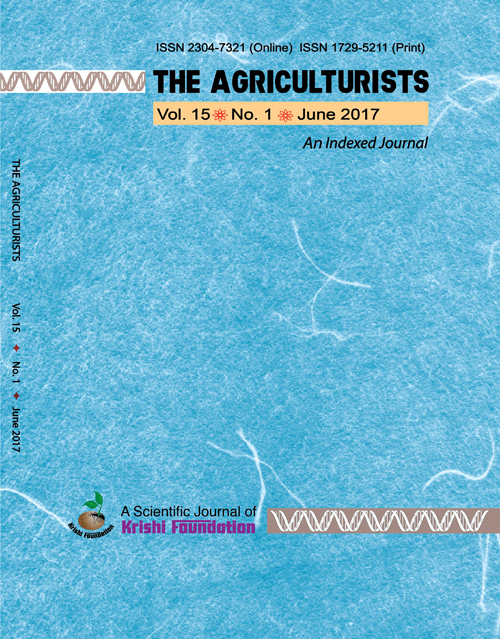Climatic Variability and Wet Season Rice (<i>Oryza sativa</i> L.) Production in North-West Bangladesh
DOI:
https://doi.org/10.3329/agric.v15i1.33430Keywords:
T. Aman rice yield, climatic variability, MAKESENS model.Abstract
Climate change is influencing rice (Oryza sativa L.) production in some agro-ecological regions of Bangladesh. The impact of seasonal climatic variability on rainfed lowland rice (transplanted aman or T. Aman) yield in north-west Bangladesh was analyzed based on historic weather data from 1971 to 2010. Wet season maximum and minimum temperatures were increasing by 0.0174 and 0.0083°C year-1, respectively. Sunshine hours for the same period have decreased by 0.0259-0.027 hr year-1. The representative concentration pathway (RCP) based projection showed increased maximum and minimum temperatures by 0.42-1.51 and 0.79-1.34°C, respectively in 2050. T. Aman rice yield could be reduced by 0.17-0.37 t ha-1 if temperature rises by 1°C. If sunshine hour decreases by 1 hr, yield reduction could be 0.20 t ha-1. Combined effect of increased minimum temperature and decreased sunshine hours will govern T. Aman rice yield in future.
The Agriculturists 2017; 15(1) 68-80
Downloads
120
155

